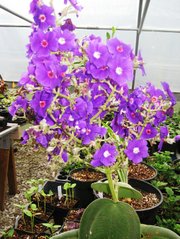Q I have a large hickory tree at my lake house in Hot Springs. A few years ago I started noticing a sticky substance coming from the tree. I didn't think much about it and now have thousands of tiny, white, flying bugs swarming the area. They cover everything. I think they are aphids, but how do you treat a huge tree? I'm tempted just to cut it down but don't know if that will just make the aphids move to another tree. What do you suggest?
A This time of year it is not uncommon for trees to be raining "sap" or honeydew from aphids, especially as dry as it is. In some parts of the state the oak trees are raining caterpillar offal. Neither of these insects is harming the trees they feed on, but they are a nuisance to people underneath. I much prefer the shade to the small nuisance. In the case of aphids and honeydew, instead of spraying with an insecticide (which would not be cost effective on a large tree), take a water hose and use the hardest setting to spray the leaves closest to the bottom of the tree. Aphids are horrid swimmers (which is why they build up more when it is dry) and you can at least catch the ones at the base of the tree, which are the ones closest to the ground and thus to blame for more of the droppings you notice.
Q Every spring my daylilies bloom for several weeks. This year they are having a second bloom. Is it the extra wet summer or perhaps the Miracle-Gro I sprayed on them several months ago? I'm enjoying the double blooming.
A I am assuming you are doing a good job watering, as many perennials are going dormant early in these horrid dry conditions. Daylily breeders are developing quite a few new varieties with two seasons of bloom. That may be the reason for yours; or it could be the unusually mild year we have had and how early growth started this spring. I have heard from gardeners with errant blooms on irises, hydrangeas and now daylilies. Whatever the reason, enjoy them. It should not hamper their blooms next spring.
Q I would appreciate suggestions about encouraging butterfly plant and milkweed to thrive next spring. I have enjoyed another summer fostering monarch butterfly larvae and seeing them through to emergence from chrysalis. My milkweed is essentially leafless now, having fed three hatches of larvae. Aphids were not too severe this summer. The butterfly plant is still blooming, but clearly near the end. Do I cut back the canes on the milkweed? The same for the butterfly bush? Should I dig them up, or mulch in place? Do they need to be fed?
A Milkweed, or Asclepias, will die back to the ground with a killing frost. I have cut back several of mine since they, too, were leafless, or had finished setting seeds. For your butterfly bush (Buddleia), wait until late February to give it a haircut. It can have spotty blooms through early winter. Prune it hard in late February, since it blooms best on young wood.
Q Can you identify this plant that was bought at a local nursery a year ago? It had no tag and they did not know what it is. It has some flowers year-round but is currently covered with blooms. Thank you for any information you can provide.
A The plant in question is a Tibouchina, commonly called glory bush. It is not considered winter hardy, so you will need to bring it indoors this fall. It is a beautiful tropical plant with deep, rich purple blooms.
Q We moved back to Little Rock in April. The landscaping had suffered some neglect because the house had been vacant for a few months. The crape myrtle pictured looks as if it might not survive. We're not sure if that is due to under-watering during the months the house was vacant, or that it's diseased. We'd appreciate your input and suggestions.
A From the picture I cannot see any signs of the crape myrtle bark scale, nor do I think it looks as if it's at death's door. Many plants right now -- from trees and shrubs to perennials -- are looking peaked from lack of water. I would get it through until February and then prune it back some from the top and thin it out a bit to build more structure. I typically leave three or five main trunks and then take out anything that is smaller than a pencil in diameter. Monitor its growth next spring and see how it leafs out.
Janet B. Carson is a horticulture specialist for the University of Arkansas Cooperative Extension Service. Write to her at 2301 S. University Ave., Little Rock, Ark. 72204 or email her at
HomeStyle on 10/07/2017


